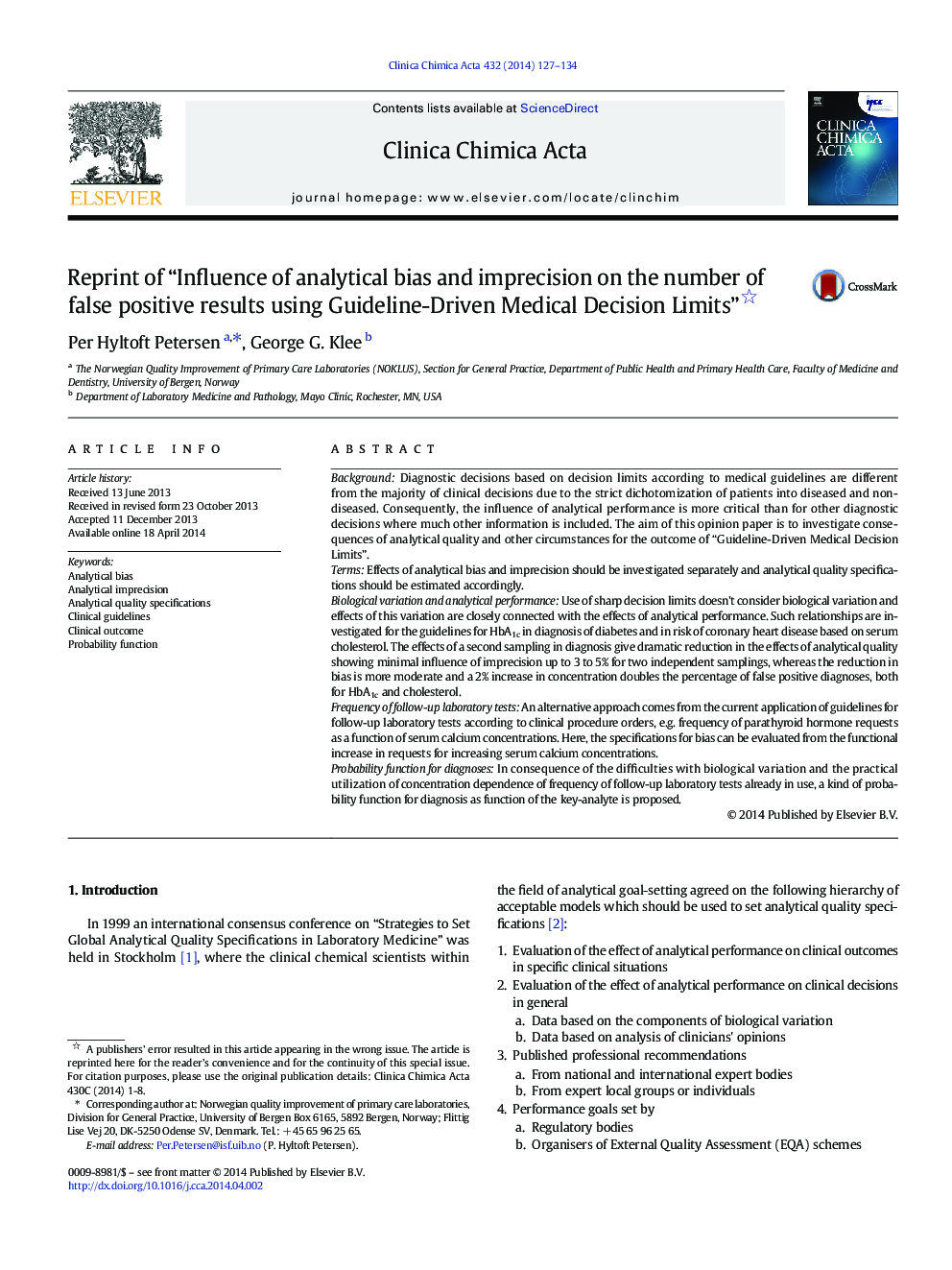| کد مقاله | کد نشریه | سال انتشار | مقاله انگلیسی | نسخه تمام متن |
|---|---|---|---|---|
| 1965430 | 1538666 | 2014 | 8 صفحه PDF | دانلود رایگان |

• Sharp decision limits are extremely sensitive to analytical bias.
• Use of two measurements in diagnosis reduces the effects of performance errors.
• Separate specifications for analytical bias and imprecision are recommended.
• Biological variation and other information should be considered in decision limits.
• A concentration related probability function as an alternative is proposed.
BackgroundDiagnostic decisions based on decision limits according to medical guidelines are different from the majority of clinical decisions due to the strict dichotomization of patients into diseased and non-diseased. Consequently, the influence of analytical performance is more critical than for other diagnostic decisions where much other information is included. The aim of this opinion paper is to investigate consequences of analytical quality and other circumstances for the outcome of “Guideline-Driven Medical Decision Limits”.TermsEffects of analytical bias and imprecision should be investigated separately and analytical quality specifications should be estimated accordingly.Biological variation and analytical performanceUse of sharp decision limits doesn't consider biological variation and effects of this variation are closely connected with the effects of analytical performance. Such relationships are investigated for the guidelines for HbA1c in diagnosis of diabetes and in risk of coronary heart disease based on serum cholesterol. The effects of a second sampling in diagnosis give dramatic reduction in the effects of analytical quality showing minimal influence of imprecision up to 3 to 5% for two independent samplings, whereas the reduction in bias is more moderate and a 2% increase in concentration doubles the percentage of false positive diagnoses, both for HbA1c and cholesterol.Frequency of follow-up laboratory testsAn alternative approach comes from the current application of guidelines for follow-up laboratory tests according to clinical procedure orders, e.g. frequency of parathyroid hormone requests as a function of serum calcium concentrations. Here, the specifications for bias can be evaluated from the functional increase in requests for increasing serum calcium concentrations.Probability function for diagnosesIn consequence of the difficulties with biological variation and the practical utilization of concentration dependence of frequency of follow-up laboratory tests already in use, a kind of probability function for diagnosis as function of the key-analyte is proposed.
Journal: Clinica Chimica Acta - Volume 432, 15 May 2014, Pages 127–134